Toi IhoDuality
Oct 6, 2015

Arana Cassino Edwin says his art represents the two sides of his self, Māori and Pākehā. Kaituhi Matt Philp reports.
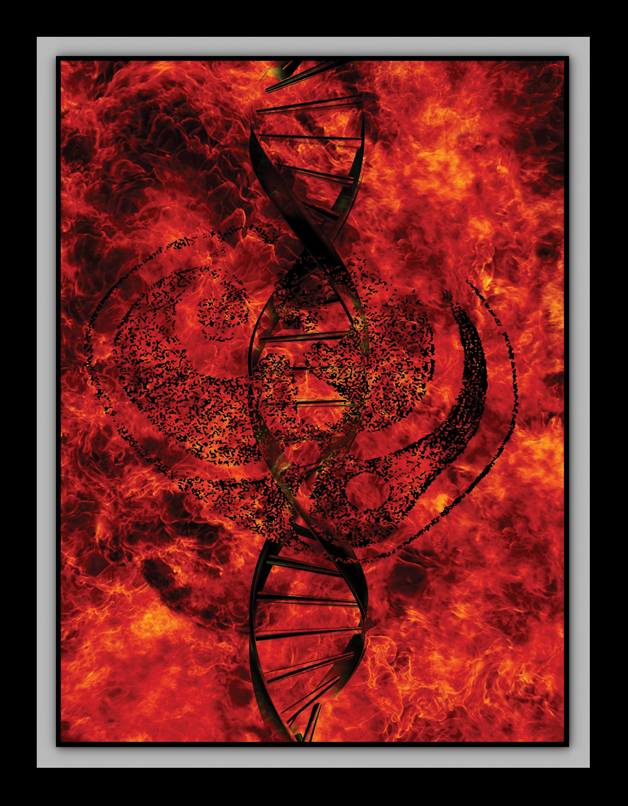
Cave Art 02
The photo by Ngāi Tahu artist Arana Cassino Edwin is of a face coated in what looks like tar, two large eyes swimming in the blackness. They stare out from some unreachable place, registering some private horror. It’s only after a long moment that the features become obvious and you realise, with a start, that it’s Edwin himself.
One of a series called Pharmaceutical Psychosis Discomposure, the image was taken during a three-week period earlier this year when Edwin’s epilepsy medication was adjusted. The new meds “fought each other”, according to the 45-year-old, who had never been in such a dark place in his life. Instinctively, he turned to art to document what he was experiencing.
It has always been this way for Arana, who has battled not only with epilepsy, which first surfaced in his teenage years, but addiction and other demons. Throughout most of it he has continued to make his art, variously drawing, painting, sculpting, carving or, more recently, taking photographs, the choice of medium often dictated by the state of his finances. When I visited Edwin’s central Nelson house, he was down to his last packet of fine ink pens, by necessity working only in black and white. “Once these run out I guess I’ll have to think of something else,” he said.
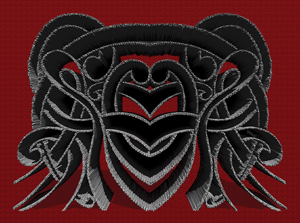
Kowhaiwhai 06
Nelson has been home since 2013, when Arana came up from Timaru’s Aoraki Polytechnic to complete the “challenging” final year of a fine arts degree at Nelson Marlborough Institute of Technology (NMIT). Studying art has coincided with drying out – he’s been sober almost four years now – and both have helped to sharpen his art practice.
“After sobering up, I’ve been able to conceptualise and understand things much better. And doing the degree has really taught me to dig deeper, to find out more about my subject matter. There’s a lot more depth and meaning to what I do now. It’s a bit like being a chef: you need to get to know your ingredients before you start mixing them or planning a menu fit for consumption.”
One of those ingredients is his Māori heritage. Arana’s mother is from Arowhenua, Temuka, but he was raised by his father Anthony, who emigrated from Birmingham, England, in the 1960s. There was limited interaction with his Ngāi Tahu roots when he was growing up in Timaru, although, he says, “if you’re Māori, you definitely know you’re Māori”. The interest in his heritage has flourished more recently, encouraged by his older brother Awatea, who is fluent in te reo Māori.
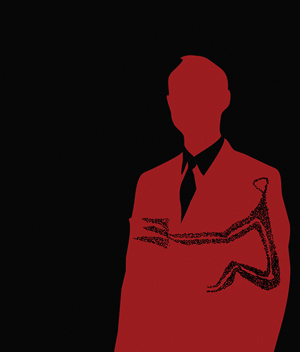
Cave Art 03
“I’ve wanted to learn more about my connections to my Māori side, so I’ve been doing that. Awatea is exceptionally knowledgeable in that area, and has a vast repository in the whakapapa and the language. I understand its basic mechanisms; I’ve just never been able to totally immerse myself in it. I guess I feel like I stand in the middle – a third place, ‘toru’, which
I explored in my BA thesis.”
The second youngest of six siblings, Edwin was very young when his mother left. His father had served as a reporter at the Dannevirke Evening News and several other newspapers over the years before shifting to Timaru, where he worked as a wool scourer and a barman, among other things. Suddenly, he was thrust into solo fatherhood.
“He’s a great dad, a mountain of intellectual mana, remembered in my childhood neighbourhood for his huge voice. We’d be up the street playing and he’d come to the gate and yell for us. The other kids would say, ‘Arana, your dad is calling you.’”
His father is a voracious reader (“He’s exceptionally clever, and has the memory of an elephant,” Arana says) and a lifelong lover of art. The children were encouraged to follow his lead. Edwin’s sister Lavina is a very capable amateur painter and photographer, while Awatea went to carving school and is a respected teacher of Wing Chun Kung Fu. Youngest brother Manu is a multitalented artist and tattooist, now living and working in Germany, and eldest brother Johnny became an inventor of sorts, with a unique talent for fixing mechanical things. Rewi, who died some years ago, was probably the most gifted of all, and could “draw practically anything”, according to Edwin.
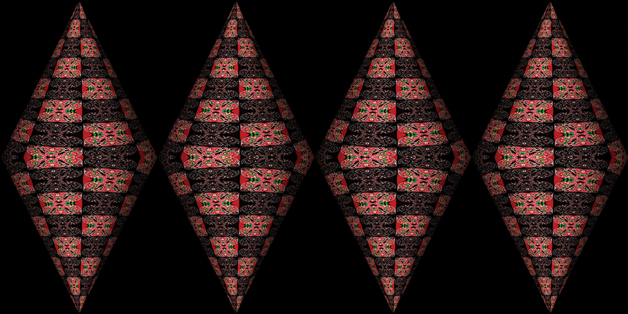
Kowhaiwhai 16
“It was always about creativity at home, about free thinking and that sort of thing. Dad’s an atheist, but he sent us to Catholic schools because they offered a better education. We’d go to school and learn among other things about Jesus and the Bible, but when we came home it was a totally different environment. No one in my family is religious.
“There were always plenty of books on all manner of subjects at home. I got to know all the old painters, and had my favourites as a kid. Bruegel – I used to love his paintings, like some weird cartoons. Henry Moore was my favourite sculptor. There was Van Gogh, Jackson Pollock, to name just a few. And I did origami. I’d run home after school to watch Vision On, and sit there with my paper set out, waiting for Tony Hart to do his origami pieces.”
Around the age of 15, he attended weekly carving classes run by Timaru carver Dan De Har, and did his first traditional Māori bone carving. But he was too busy experimenting with styles to stick at any one form. There were elements of Cubism in his work, and some obvious Henry Moore influences. “I’d do a carving, and think, ‘I’ll try something different now.’”
He’d long since dropped out of school by then, and was drinking and taking drugs. The drink made him unpredictable. “I might be alright, or I could be the knuckle-dragging Neanderthal,” he says. “It was a gamble.”
Much later, approaching middle age, he tried rehab, and was briefly institutionalised. “That’s when everything sunk in: I knew that I couldn’t keep going down that road. It was leading to madness, or death, or both.”
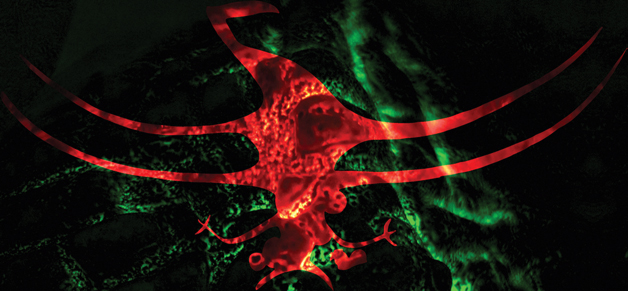
Cave Art 06
He’d already enrolled at Aoraki Polytech in Timaru to pursue a fine arts degree, and his paintings from that time grimly document his struggles. There are figures restrained in strait jackets, mouths gaping, eyes ringed with black. This was art as catharsis, and he painted at a fever pitch, using house paints and fat brushes. “It’s not a space I wanted to go to, but it was a space I could draw on, raw and very emotive. Everything that was going on came out on that canvas.”
The art is more considered now, the subject matter more researched. “High school for me was over in a matter of weeks, but I never stopped learning; I’ve been an avid reader all my life. If I’m interested in something I’ll go at it a hundred miles an hour.”
There is also a much clearer referencing of his Ngāi Tahu background – although the traditional Māori elements tend to have to fight for their place among a host of other influences.
The operative word here is diversity.
At the house, where Arana makes his art at a table in a quiet corner of the kitchen, he shows me a set of prints that combine kōwhaiwhai patterns with lines straight out of Art Nouveau. His sketch book, meanwhile, is full of finely detailed drawings of outré subject matter – brains speared by hypodermic needles; eyes trailing USB cables; skulls and tentacles. There’s a punky, tattoo parlour quality to some of these images. Edwin, who plays the drums and guitar, listens to an eclectic range of music when he’s working, but has a special fondness for metal.
“I’m constantly searching for a heavier, more complex sound,” he says.
Another interest is science. In a recent series created on the computer, Edwin combined images of the molecular structure of both greenstone and blood with images from Ngāi Tahu rock art. That series was inspired by seeing rock drawings at various locations around Canterbury, experiences that left a deep impression. “I remember thinking ‘Holy s—!, these guys were camping out here all those hundreds of years ago, leaving their story on the wall.’”
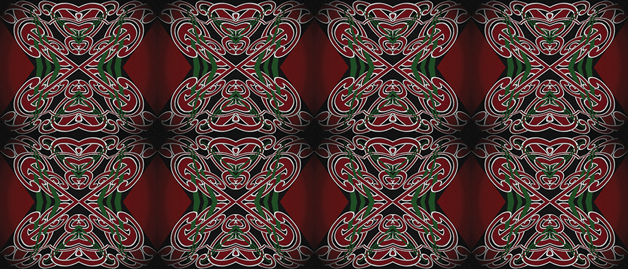
Kowhaiwhai 02
The rock art series depicts the blood of his ancestors, immortalised in stone. But as elsewhere in his art, Edwin isn’t interested in treating Māori imagery with kid gloves. He likes to push boundaries, mess with motifs. The patu, for instance, is a favourite object to carve, but Edwin’s patu carvings include handles that flop at odd angles, and various embellishments. From front-on, his manaia carvings could almost qualify as “traditional” carvings; rotate them, however, and they’re riddled with cut-outs.
Arana sees work like this as representing the two sides of his self, Pākehā and Māori. And he’s not concerned if traditionalists don’t like it. “In the thinking of the great [modernist Māori sculptor and wood carver] Arnold Wilson, I consider art forms such as carving need to keep evolving. I’m a believer in tradition, but I also believe in letting things move in new directions, too – expansion from the seed of tradition.”
Yet he’s eager to learn more about Ngāi Tahu traditions, and to make connections with other iwi artists, “to get another view on things”. He planned to attend a hui of Ngāi Tahu artists a while back but couldn’t attend due to ill health. “The worst thing about epilepsy is not being able to keep dates,” he says. “I often don’t know what I’m going to be like until I wake up.”
Not being able to afford new art supplies hurts, too. His illness prevents him from taking on a job, and art materials aren’t cheap. It’s hugely frustrating. You suspect, however, that even when his ink runs dry, Edwin will keep making art, and that it will be grunty, even confrontational, and always from the heart. “I want to say something with my art.”